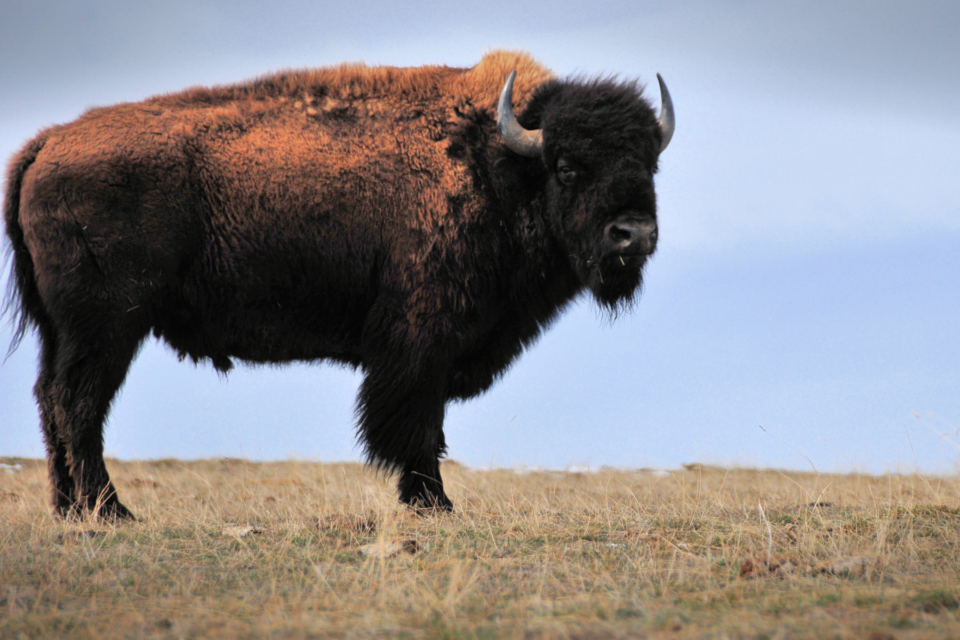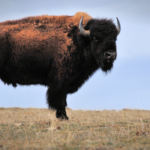Two Local Partners Awarded Annual USDA Forest Service Rangeland Management Honors

The Medicine Bow-Routt National Forests and Thunder Basin National Grassland is pleased to announce that two local partners have been awarded with annual USDA Forest Service Rangeland Management honors. One was recognized for their research, conservation practices, and collaborative efforts, the other for implementation of an innovative virtual fencing system.
The Thunder Basin Grasslands Prairie Ecosystem Association (TBGPEA) has won the Outstanding Rangeland Management Partner Award, for partners who bring positive change to rangelands, and the Fitch Ranch has achieved the Rangeland Ingenuity Award, for Forest Service employees and/or partners who have taken proactive efforts to adapt to changing conditions and/or develop creative solutions.
Along with the Fitch Ranch, Forest Service employees Marie Stiles, Rangeland Management Specialist on the Parks Ranger District of the Routt National Forest, and Dwayne Rice, Rocky Mountain Region Range Program Manager, were also honored.
“It’s great to see our local partners recognized for their contributions to sustainable landscapes,” said Geri Proctor, Rangeland Program Manager for the Medicine Bow-Routt National Forests and Thunder Basin National Grassland. “These awards showcase the work being done on the ground through partnerships and innovative ideas to meet the objectives of sound land management. It’s also important to note how the ranchers we work with are willing to embrace new technology to help achieve those same objectives.”
The Fitch Ranch received their award in June at the Colorado Cattlemen’s Association Annual Summer Meeting in Colo. Spgs., Colo. TBGPEA was presented with their award in mid-August at the annual meeting of the Public Lands Council in Cody, Wyo.
Following are award details:
Forest Service Outstanding Rangeland Management Partner 2021
Presented to Thunder Basin Grasslands Prairie Ecosystem Association
The Thunder Basin Grasslands Prairie Ecosystem Association (TBGPEA) is a collaborative initiative of ranchers and energy production companies established in 1999 directly affecting nearly a million-acre landscape in Eastern Wyoming. This landscape includes approximately 533,000 acres of the Thunder Basin National Grassland, as well as Bureau of Land Management, state and private holdings.
TBGPEA has worked closely with the Douglas Ranger District in multiple ways over multiple years. Recently, various controversies have emerged about grazing practices, energy development, prairie dog management, listing of potentially endangered wildlife species, and changes in land uses. TBGPEA has recognized the importance of maintaining and enhancing the economic and ecological values of the Thunder Basin National Grassland as an on-going challenge to its residents and national and international stakeholders.
In 2014 TBGPEA initiated a research initiative group to promote research projects on the Eastern Wyoming landscape and to provide data to assist in grassland management decisions. The research provided location specific information for the Forest Service analysis in the 2020 Grassland Plan Amendment. Currently, TBGPEA is directly involved in six primary research projects conducting field work in 2022 including a grant-funded rangeland drought resilience project, sagebrush fire effects project, and a cattle/prairie dog interaction study. Three additional projects are funded directly from TBGPEA budget including a long-term drought study, long term grazing enclosure study, and stakeholder perception social science project conducted by Boise State University. There is also a FS/ARS cooperative research study evaluating the practical use of remotely sensed data to assist in prairie dog colony mapping.
TBGPEA initiated and completed assessments resulting in a Comprehensive Conservation Strategy. This includes three agreements for two different ecosystems including eight sensitive species. The assessments provided sage brush mapping for a large portion of the Thunder Basin National Grassland and developed, in partnership with the Forest Service, sage brush monitoring protocols. The Comprehensive Conservation Strategy identified conservation management practices for Shortgrass prairie species including black-tailed prairie dog, burrowing owl, mountain plover and ferruginous hawk and sage brush steppe species including Greater sage-grouse, sage sparrow, sage thrasher and brewer’s sparrow. The practices promoted proactive voluntary actions by landowners and grazing permittees and energy companies to improve wildlife habitat for these species of concern.
TBGPEA played a vital role in the collaborative efforts resulting in the 2020 Grassland Plan Amendment. They convened partners that provided funding and labor leading to prairie dog colony mapping and protocol development. TBGPEA led a pioneering approach to mapping prairie dog colonies and protocol development to provide vital data for implementing management on the ground. As a partner with the FS and private landowners, TBGPEA participated in a Wyoming Department of Agriculture five-year invasive species treatment grant on the Grassland. TBGPEA identified treatment locations and added funding to expand the number of treated acres. Under this grant Cheatgrass, Russian olive, salt cedar, and poison hemlock were targeted.
Forest Service National Rangeland Ingenuity Award 2021
Presented to Fitch Ranch (Debbie and Cameron Fitch), Marie Stiles (Forest Service Rangeland Management Specialist), and Dwayne Rice (Forest Service Regional Range Program Manager)
The Fitch Ranch was directly affected by the 2020 East Troublesome fire, which in total burned 197,000 acres of Forest Service, BLM and private land. Their permitted Forest Service Corral Creek allotment for summer grazing was partially burned. Fences were destroyed. The Fitch Ranch didn’t know if the unburned portion of their allotment could be grazed without significant additional cost in temporary fence and labor. The conventional option was to completely rest the entire 12,538-acre Corral Creek allotment.
A reduction in their cattle herd allowed for better demand of the unburned allotment portion but the question persisted of how to control the management of the cows without the additional cost and trouble of an electric fence or riders. Thinking outside the box, the Fitch Ranch approached the Forest Service about a Virtual Livestock Containment System in lieu of a physical barrier.
Local Rangeland Management Specialist Marie Stiles saw the potential of the new virtual fencing system and the positive implications of using it to partition pastures without the need for wire/posts and agreed to allow the Fitch Ranch to demonstrate its’ effectiveness on the ungrazed portion of the allotment. Stiles worked with Debbie and Cameron Fitch to develop the maps, determine likely transmission tower locations, and implement a monitoring plan to measure the effectiveness of the new livestock management system.
The Fitch Ranch privately purchased two transmission towers and re-engineered them into nomadic rather than stationary towers. Fewer but more mobile towers are cheaper than single use stationary towers. The Ranch also contracted for the lease of the collars as well as the software application and support through the Vence company. The cows were collared in March and subjected to a training regime at the ranch headquarters. With training and time, the herd became familiar with the cues and subsequent consequences of the Virtual Fence.
When the cows were turned out on the Forest Service allotment the animal locations were closely monitored and the virtual fence system performed as advertised. An additional test occurred a few weeks following turnout when the cows were virtually herded off the allotment following a tangible threat from a new wildfire. According to Debbie Fitch, “Within an hour of getting the wildfire notification from Marie, we were able to move our 120 head of cows and their calves off of our Forest Service allotment and onto our adjacent home ranch without getting on horseback, ATV, or buggy.”
Thanks to the efforts of Debbie and Cameron Fitch, Marie Stiles, and support from Dwayne Rice, the virtual fence system demonstration was a huge success. The system allowed the Fitch Ranch to implement a grazing plan that was economical for the ranch and ecologically responsible for the natural resources. The implications of their efforts are changing the way the Forest Service is using livestock grazing as a tool to manipulate rangelands.


